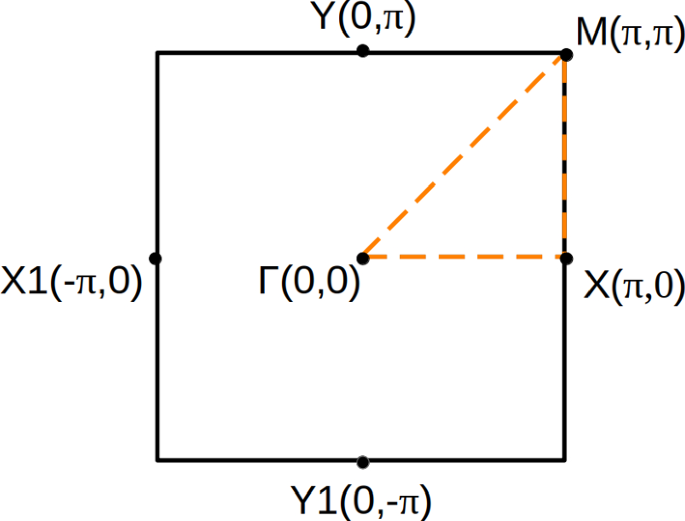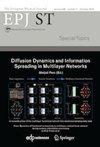簇摄动理论在哈伯德模型中的适用性和局限性
IF 2.3
3区 物理与天体物理
Q2 PHYSICS, MULTIDISCIPLINARY
引用次数: 1
摘要
摘要在考虑聚类摄动理论(CPT)的结果时,我们提出了重要的用例和局限性。CPT将无限晶格系统的小簇解与常规带理论中的Bloch理论相结合,提供了热力学极限下格林函数的近似解。为此,我们正在研究一维和二维系统中的单波段和多波段哈伯德模型。本文特别关注了二维方形晶格在半填充和中等相互作用强度($$U \le 3t$$ U≤3t)下的赝隙制度以及金属-绝缘体转变。我们指出,簇的有限大小的水平间距限制了CPT光谱特征的分辨率。这限制了对金属-绝缘体过渡的渐近性质的研究,因为它需要更大的簇大小,超出了计算能力。本文章由计算机程序翻译,如有差异,请以英文原文为准。

Applicability and limitations of cluster perturbation theory for Hubbard models
Abstract We present important use cases and limitations when considering results obtained from cluster perturbation theory (CPT). CPT combines the solutions of small individual clusters of an infinite lattice system with the Bloch theory of conventional band theory to provide an approximation for the Green’s function in the thermodynamic limit. To this end, we are investigating single-band and multi-band Hubbard models in 1D and 2D systems. A special interest is taken in the supposed pseudogap regime of the 2D square lattice at half-filling and intermediate interaction strength ( $$U \le 3t$$ U ≤ 3 t ) as well as the metal–insulator transition. We point out that the finite-size level spacing of the cluster limits the resolution of spectral features within CPT. This restricts the investigation of asymptotic properties of the metal–insulator transition, as it would require much larger cluster sizes that are beyond computational capabilities.
求助全文
通过发布文献求助,成功后即可免费获取论文全文。
去求助
来源期刊
CiteScore
5.10
自引率
10.70%
发文量
313
审稿时长
3-8 weeks
期刊介绍:
EPJ - Special Topics (EPJ ST) publishes topical issues which are collections of review-type articles or extensive, detailed progress reports. Each issue is focused on a specific subject matter of topical interest.
The journal scope covers the whole spectrum of pure and applied physics, including related subjects such as Materials Science, Physical Biology, Physical Chemistry, and Complex Systems with particular emphasis on interdisciplinary topics in physics and related fields.

 求助内容:
求助内容: 应助结果提醒方式:
应助结果提醒方式:


